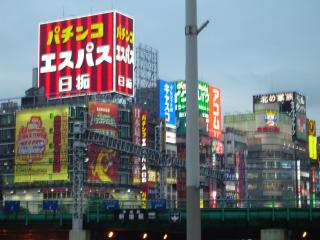Tokyo: Hajime Mashite
 Finally, one dream has come true. At 1:05pm my Dragon Air flight 362 landed in Tokyo's famed Narita Airport.
Finally, one dream has come true. At 1:05pm my Dragon Air flight 362 landed in Tokyo's famed Narita Airport. It's been a wish as a kid that I can reach Tokyo someday. I still recall my place in Davao City has been called Little Tokyo in World War II because of the heavy presence of Japanese soldiers and plantation workers. To this day, the erected tower in my elementary school grounds is a reminder of Japanese presence in my place half a century ago. Even as Japan is looked as an aggressor by many territories during the Second World War, it has at least tried to pay its guilt through assistance in government and non government projects.
I had strong affinity with Japan and its people when I was chosen as one of the RASEA scholars in high school. I tried learning Japanese on those years while communicating with benefactors: Kesheiro Saeki, Coco Izumi, Heiji Matsumoto, Yasukazu Kigasawa and other forgotten names. After college, I got the chance to exchange letters with Japanese pen pals named Nobue Ozawa and Rie Takahashi which opened up more knowledge in Japanese culture; I recall Rie painstakingly wrote hiragana and katakana characters for me to learn the language until we lost contact and I am unable to pay off her efforts.
I applied for Monbusho scholarship in 1998 and failed. I had to greet the panel of judges "hajime mashite" learned from a fellow candidate. I wished I could land a post graduate study grant on one of designated Japanese universities where I can further hone my chosen field of work. With the plans now in the drain, I had to find other methods. Achieving such goal can come sooner or later. I did not realize that until today.
Visiting Japan can be very expensive. Dinner we had at Fuji-Mama's at Omote Sando cost my hosts 13,000 yen (approximately PHP 6,500) for seafood bisque, calamari and a few other appetizers and drinks. That makes it more expensive than the traditionally accepted rocketing food prices in Hong Kong. Gaijin and locals happily mix up in the commonly accepted tongue -- Nihongo. Conversations are pleasantly listened better than the polymorphic Cantonese accent.
The first day of the sojourn has finished very well. Hopefully rains won't spoil the rest of it.

0 Comments:
Post a Comment
<< Home